For centuries, Indians have honed the art of manipulating fabric into intricate garments, showcasing their mastery of looping, knotting and twisting. This same skill was applied to their hair, resulting in a plethora of hairstyles that were an important aspect of their appearance.
A Glimpse into the History of Hair Care and Hair Decoration
The art of hairstyling in India can be traced back thousands of years, evident in the terracotta and stone figurines from the Indus Valley civilization dating as far back as 2500 BCE. Literature from ancient times in India also expounds upon the significance and diverse range of hairstyles

Dhammilla (Sanskrit): hair bun painted on an Ajanta fresco.
Gandharan art and representations of the Buddha feature ringlets, waves, and curls that seem to defy the laws of possibility. In sculpture, literature, and art, we witness the evolution of curls and elaborate coiffures over several centuries in different regions of the subcontinent, which appear to have reached their zenith during the Gupta Age.
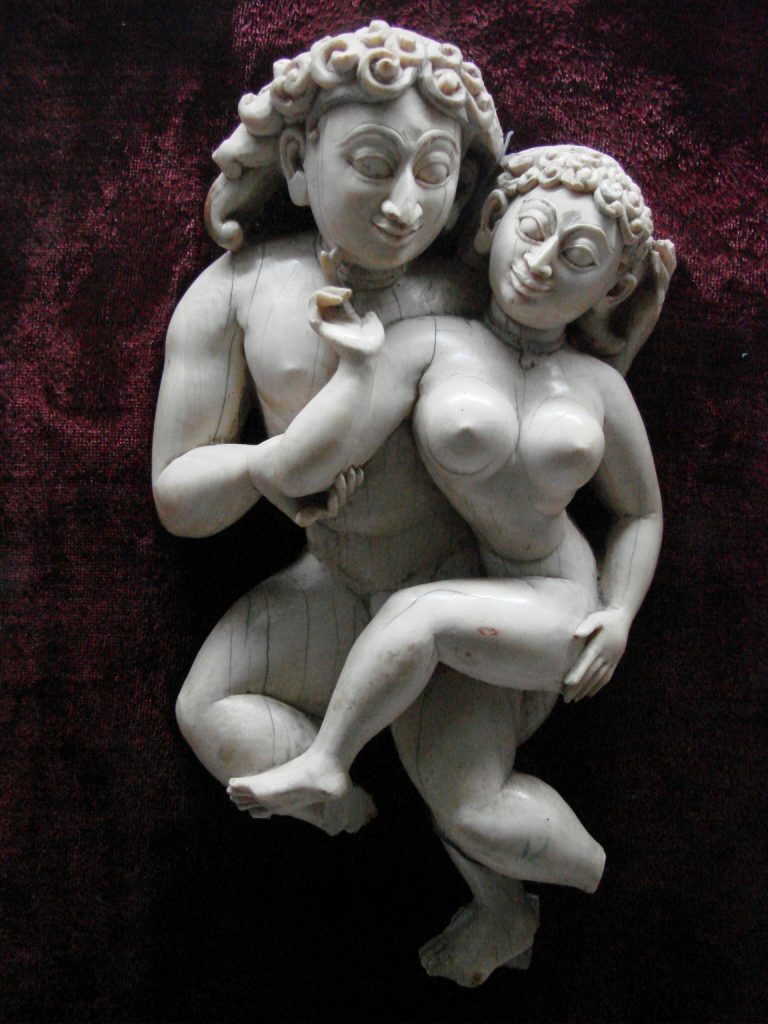
Having long, clean, and untangled hair – held immense importance for Indians. Since the earliest days of Indian civilization, both men and women took great pride in their long hair and made great efforts to care for it. Hair was shampooed using natural ingredients and dried in the sun. Fragrant flowers, herbs, spices, or oils were used to imbue the hair with captivating scents. To perfect their hairstyles, Indians relied on the use of mirrors and combs.

While both men and women typically combed their hair upwards into a large bun and secured it with a cord on top of their heads, this was only a very basic way of styling the hair. There is a myriad of styles found in sculptures – whose sheer variety is astonishing – encompassing corkscrew curls, ponytails, chignons, buns, long single braids, and even hairstyles featuring rows of upturned curls that adorn the crown.
Traditional Hair Ornaments to Complement Traditional Hairstyles
Given the importance that was placed on one’s appearance – and to hold their hair in place – our ancestors adorned their hairstyles with various ornaments. These could range from simple thread cords to exquisitely crafted golden crowns. Strings of gems and pearls, golden hairpins, and forehead ornaments were just a few examples of the decorative accessories we embellished our hair with. Creative jewelers and designers in the days of yore – also combined multiple types of hair ornaments.
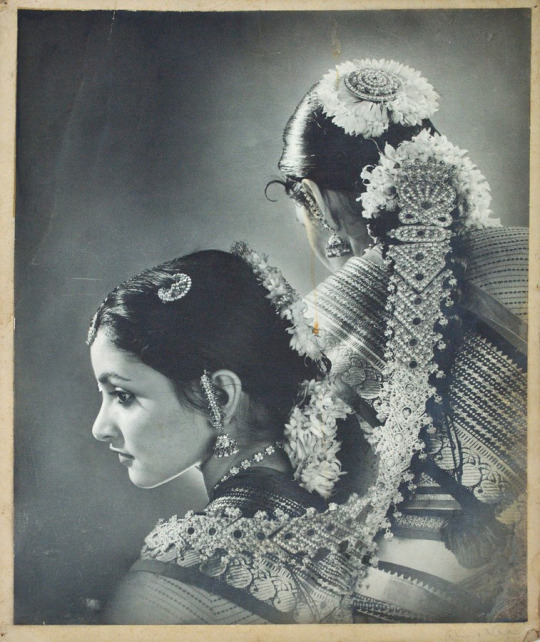
Sanskrit and Tamil texts often mention five distinct hairstyles, including knots, buns, curls, parted hair, and plaits. The ‘veni’, which was a plaited hairstyle, has a long-standing history and was frequently adorned with flowers and jewels. The hair parting itself served as an opportunity for decoration, with flowers or jewelry arranged along it, akin to the ‘mang tikka’ with a hanging pendant – worn alongside a ‘bindi’.
Even today – certain forms of hair decoration, such as the use of the ‘gajra’, are very popular. Leaves too – are sometimes worn as hair ornaments in tribal communities, while flowers with elongated petal shapes resembling leaves are also favoured.
Popular Indian Hair Ornaments
Here is an inclusive compilation of traditional hair ornaments that continue to be cherished by Indian women in both traditional and contemporary designs.
Borla: A spherical-shaped pendant, traditionally worn at the centre of the forehead by Rajasthani women. Made of gold or silver, it is embellished with precious stones, pearls, and has intricate patterns. The borla is often paired with a maang tikka, creating a captivating focal point.
Maang Tikka: A traditional hair ornament featuring a decorative pendant suspended from the centre of the forehead. It harmonises flawlessly with traditional ensembles such as sarees and lehengas.
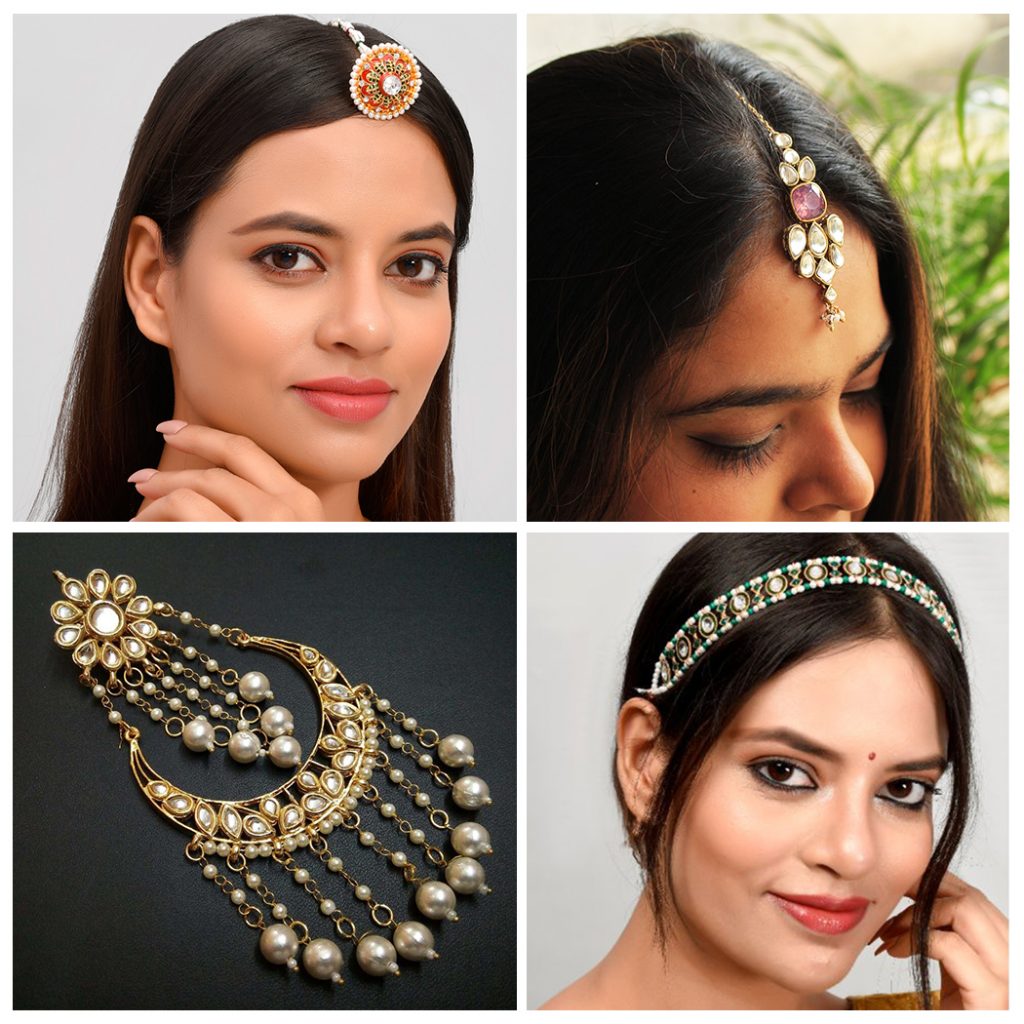
Matha Patti: A forehead ornament consisting of a chain or multiple chains with an elaborate pendant resting gracefully on the forehead. It is primarily worn on special occasions like weddings and festivals.
Jhumar/Passa: An ornamental piece adorning one side of the head, secured within the hair.
It is embellished with stones, beads, and sometimes dangling pearls, adding elegance to a formal or festive look.
Juda Clip: Similar to the Juda pin, but larger and more encompassing, covering a significant portion of the bun. These clips feature a hinged closure or clasp that ensures secure and stylish hair arrangements.
Hair Jewelry (Hair Chains): These consist of decorative chains and strings that are attached from one side of the hair to the other, typically resting on the crown of the head. They are often adorned with gemstones, beads, and come in a mix of simple and intricate designs.
Juda Pin: A long and sturdy hairpin used to secure a bun or chignon hairstyle -Juda pins come in different designs, such as floral motifs or elaborate patterns, and are often adorned with stones or decorative elements.
Billai: This is a long, thin ornament traditionally worn along the length of a braid in South India. Made of gold or silver, often intricately designed, the billai imparts grace and elegance to the hairstyle, and is commonly seen during weddings and festive occasions.
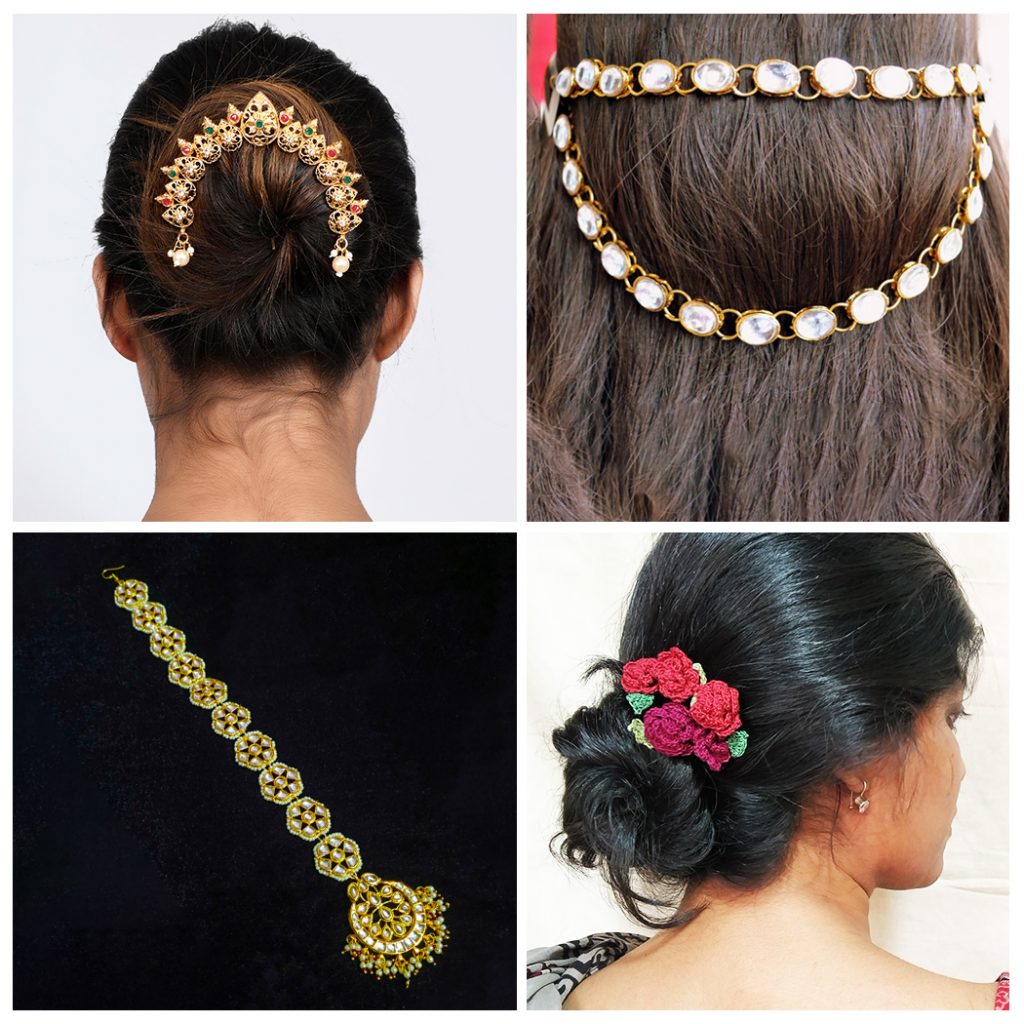
Choti: A decorative accessory worn at the base of a braid or ponytail going down the entire length of the braid. It can be crafted from fabric, beads, or metal, or even in precious metals and comes in multiple designs, adding elegance to the hairstyle.
Gajra: A garland made of fresh or artificial flowers, worn around a bun or braided hair. This popular traditional hair accessory, particularly in South India, is worn every day and also donned during weddings and festivals.
Parandi: A Punjabi hair accessory woven into the braid. The end of the Parandi has a long, decorative tassels made with colourful threads, beads, or other embellishments. They infuse a vibrant and colourful look to one’s hair.
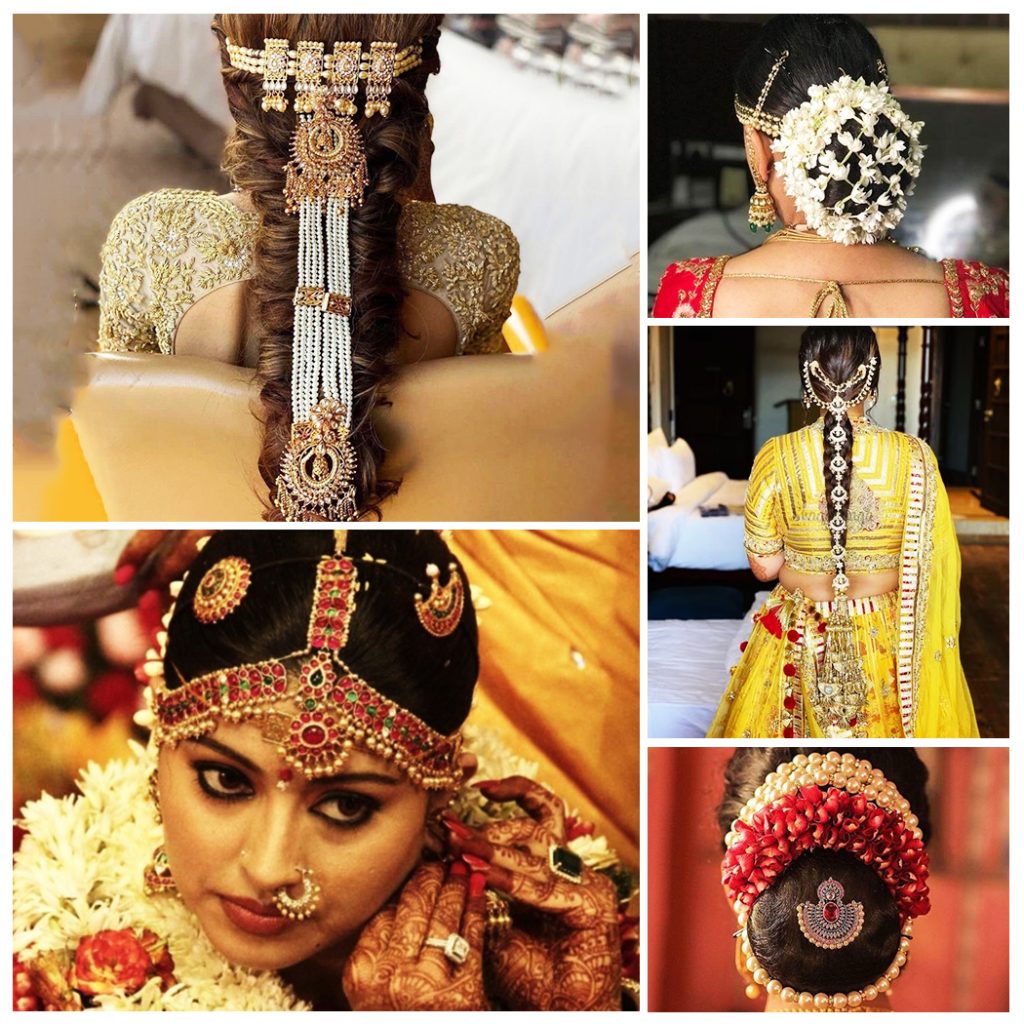
Rakodi: A decorative hairpin or comb popular among South Indian women, made gold or silver, it showcases intricate designs or motifs. Rakodis are frequently used to adorn a bun or chignon.
Surya & Chandran: These are hair ornaments representing the sun and moon, respectively. Worn on either side of the head, above the ears, they add an almost celestial feel to traditional hairstyles. Typically made of gold or silver, they include gemstones and are crafted in intricate designs.
These are just a few examples of the remarkable hair ornaments commonly used in Indian culture. Each piece possesses its unique style and significance, adding charm and elegance to the hairstyles of Indian women.
Whether it’s a traditional occasion or a contemporary setting, these exquisite hair ornaments continue to captivate and complement different hairstyles. Indian hair ornaments serve as an integral part of the country’s cultural identity, showcasing the artistry, creativity, and timeless elegance that define our craftsmanship and are part of the enduring spirit of India’s artistic heritage.
